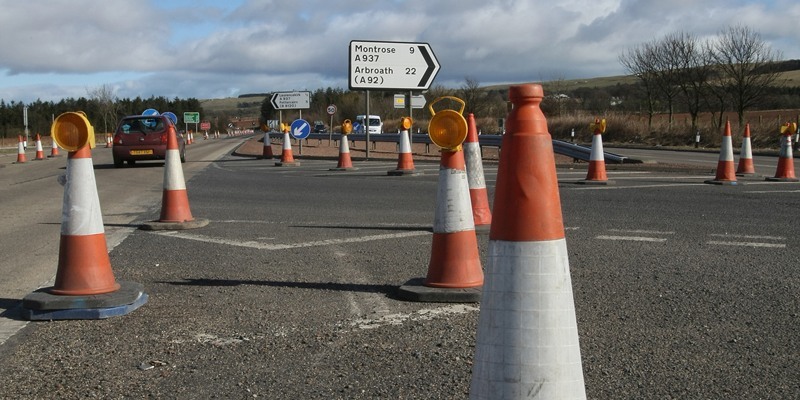The North East Safety Camera Partnership (NESCAMP) has said it is shocked at the number of speeding offences recorded by the fixed speed camera on the A90 Aberdeen to Dundee road near the Marykirk/Laurencekirk junction.
During the week of Monday, September 20, to Tuesday, September 28, in the region of 300 offences were recorded by the camera which operates southbound on the A90.
A 50mph speed limit was introduced five years ago in an attempt to alleviate traffic problems at the notoriously dangerous junction which is the subject of a campaign calling for a flyover to be built.
But locals have been adamant the limit has failed to slow motorists and the staggered junction at the entrance to Laurencekirk is as dangerous as ever.
Fixed cameras in the north-east region operate on rotation and the level of offences most recently recorded at Laurencekirk is a substantial increase since the last time the camera was in operation.
Partnership manager Julie Smith said, “The number of people speeding at this junction is unacceptable.
“The speed limit of 50mph has been well publicised and there are highly visible signs to indicate what the speed limit is.
“Driving through this area at excessive speed is dangerous for all road users.”
Jill Campbell, a leading figure in the battle for a flyover, said the NESCAMP figures came as no surprise.
“This is what we have been saying all along and we have been ignored,” she said.
“The safety measures taken at the junction, including the 50mph speed limit, were to have been temporary and several years on they are having no effect at all.”
Ms Campbell said the speed limit was either being ignored or it caused bunching up of traffic on the trunk road which made it difficult for drivers to get out of the side junctions.
She also claimed the accident rate had risen elsewhere as drivers avoided the Laurencekirk junction.
“I have it in black and white that Transport Scotland has said that a flyover would be necessary if the proposed 800 houses go ahead in Laurencekirk, but they will not fund it,” she said.
“It would be up to Aberdeenshire Council and local developers to meet the cost.”
The Scottish Government has said that a flyover is not included in its strategic transport projects review for the next 20 years.
The government’s petitions committee this week again asked Transport Scotland for more accurate costing for a flyover and for the accident figures of two other sites where grade separation has been approved so we could compare these figures with Laurencekirk.
